Estimated reading time 6 minutes, 54 seconds.
Viewed by many as the iconic fighter of the Second World War, the Supermarine Spitfire is one of the few aircraft that was produced throughout the entire conflict.
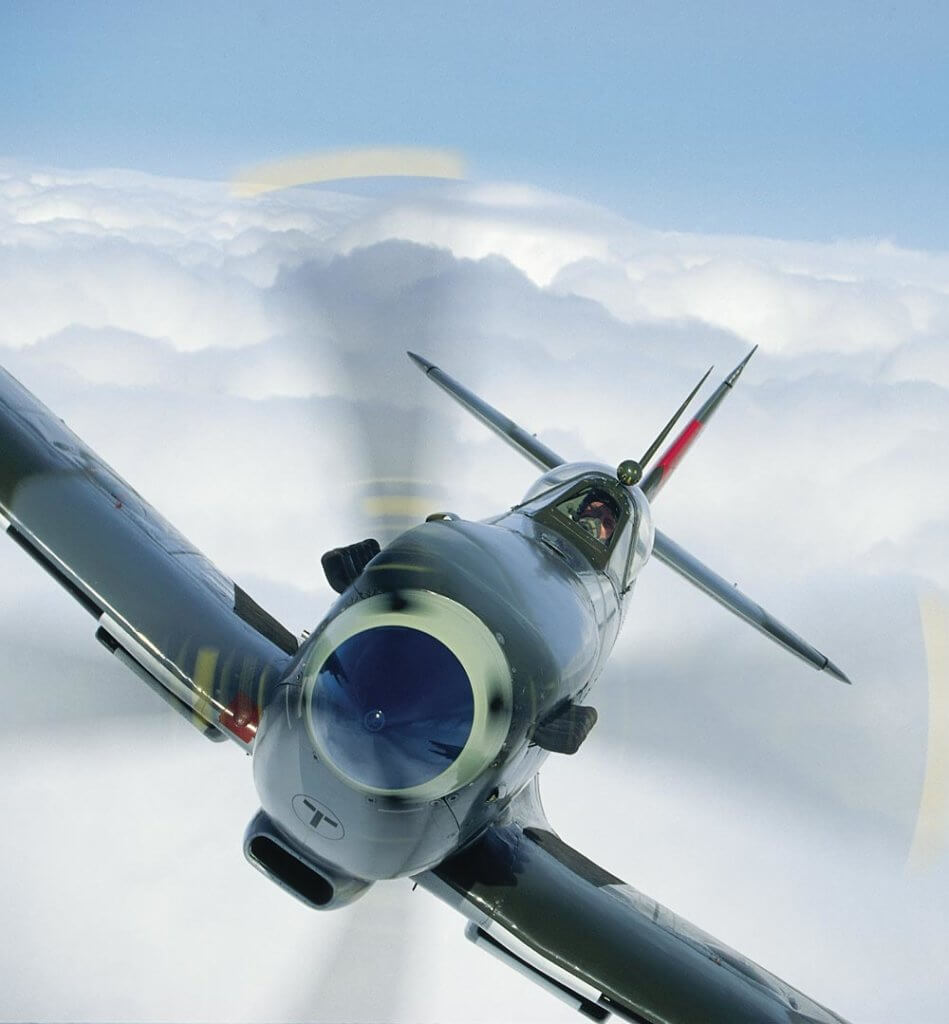
Well known for its role in repelling the Luftwaffe onslaught during the Battle of Britain, the Spitfire was also the aircraft flown by many RCAF 400-series squadron fighter pilots.
Some of the aircraft flown by those young Canadian pilots are still flying today. Here, we meet three of them.
Spitfire Mk Vb EP120, 402 “City of Winnipeg” Squadron
Owned by Stephen Grey’s The Fighter Collection and based at the Imperial War Museum, Duxford, Cambridgeshire, EP120 is probably the most famous Canadian Spitfire still existing. Built at Castle Bromwich in 1942, it initially went to 501 Squadron on June 4th of that year, where she flew in support of the Dieppe raid.
During one of these missions, Wing Commander Patrick Gibbs, flying EP120, shot down a Do217. On Sept. 9, 1942, EP120 was transferred to 19 Squadron, and on April 22, 1943, EP120 was assigned to 402 Squadron (RCAF) and to the officer commanding and Manitoba native, Squadron Leader Geoffrey Northcott, DSO, DFC and Bar.
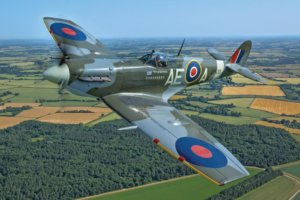
Credited with a total of nine air-to-air kills, Northcott achieved six of them while flying EP120. Escorting Beaufighters against a German convoy off the Dutch coast on June 27, 1943, Northcott achieved his first kill in EP120, modified with clipped wings, against a Bf109 and earned his first DFC. Leading the squadron on an escort mission on Aug. 2, he shot down two more BF109s and earned a bar to his DFC. On Aug. 22 while escorting USAAF B-26s, Northcott and EP120 combined to shoot down an Fw190, and another Fw190 fell to the team on Sept. 4. On Oct. 3, they damaged a Bf109, and on Oct. 24, shot down a Fw190 (EP120’s seventh kill). With seven confirmed kills, she is probably the most victorious Second World War aircraft still flying.
Damaged on Feb. 12, 1944, in one of several accidents it sustained during its career, EP120 returned to the manufacturer for repairs until June 8. Serving with various training units for the rest of the war, EP120 was grounded as an instructional airframe from June 1945 and eventually continued to serve as a “gate guardian” until 1968. She became a movie star as a static aircraft in the Battle of Britain film, then once again served as a gate guard until purchased by The Fighter Collection in 1993.
Restored by Historic Flying at Audley End, EP120 flew again for the first time on Sept. 12, 1995. She can still be seen in the skies over England, proudly wearing her AE-A code from her 402 Squadron (RCAF) days.
Spitfire Mk IXc (T9) MJ627, 441 “Silver Fox” Squadron
Rolling out of the Castle Bromwich factory as an LF.IXc on Dec. 4, 1943, MJ627 entered service with 441 “Silver Fox” Squadron (RCAF) on Sept. 25, 1944, in Belgium, wearing the codes ‘9G-Q.’
On Sept. 27, 1944, pilot officer Sidney Bregman was patrolling around Arnhem in MJ627 when his engine stopped momentarily after his external fuel tank fell off, and he switched to his internal fuel. Now somewhat behind the rest of his squadron, he looked over his shoulder and saw a German Bf109. Firing on the German fighter, Bregman and MJ627 were credited with a Bf109 victory using only 11 cannon shells.
In December 1944, 441 Squadron was posted, along with MJ627, to the Orkney Islands, Scotland. Engine problems resulted in a forced landing for MJ627 on March 9, 1945. Classified as “beyond repair on site,” MJ627 was sent off for repairs and subsequently stored.
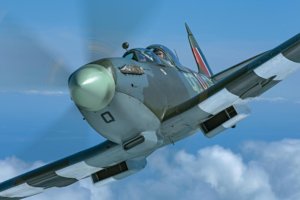
In July 1950, Vickers Armstrong Ltd. purchased MJ627 for conversion into a T9 two-seat trainer, and delivered it to the Irish Air Corps as IAC158 in June 1951.
MJ627 flew with the Irish until 1960, when it became an instructional airframe for three years prior to being sold to Film Aviation Services. Used for spare parts for other movie star aircraft, MJ627 next passed to Tim Davies in 1964, who stored her until Maurice Bayliss bought her in 1976. Having been fully restored, MJ627 flew again for the first time on Nov. 8, 1993, piloted by famed Spitfire pilot Squadron Leader Paul “Major” Day, 50 years after its first flight.
Damaged in a wheels-up landing at Coventry Airport on April 25, 1998, because the landing gear would not lower, she was restored yet again, getting airborne on Feb. 14, 2002. (As an aside, the author was lucky enough to get airborne in MJ627 with Day in 2002–she flies like a fighter should!)
Sold in 2014 to Richard Verrall’s RV Aviation, then subsequently transferred to Warbird Experiences Ltd. at Biggin Hill, she now offers passengers the thrill of experiencing the graceful Spitfire. MJ627 proudly wears the 9G-Q markings from her time with 441 Squadron (RCAF), including D-Day invasion stripes.
Spitfire LFIXc ML417, 443 “Hornet” Squadron
Also built at Castle Bromwich in early 1944, ML417 was allocated to 443 “Hornet” Squadron (RCAF) on June 2, 1944. This was the squadron led by famous RAF fighter ace James Edgar “Johnnie” Johnson.
Coded 2I-T, ML417 saw action on D-Day, and by late June was flying out of St. Croix-sur-Mer, Normandy.
On June 26, Flight Lieutenant W. A. Prest damaged an Fw190 over Rouen, and on July 13, he damaged another Fw190 over Normandy. On Sept. 29, RCAF pilot Flight Lieutenant Rooney A. Hodgins DFC shot down two Bf109s while flying ML417 over Nijmegen. Subsequently flown by 442, 401 and 441 Squadrons, ML417 was eventually stored in August 1945.
Sold back to Vickers-Armstrong in October 1946, ML417 was converted to a two-seat trainer for the Indian Air Force and delivered in October 1948. She became HS543 with the IAF, and eventually went to the IAF Museum by 1967. Bought by U.S. Senator Norman Garr in 1971, she was delivered to the U.S. and a restoration was started in Colorado.
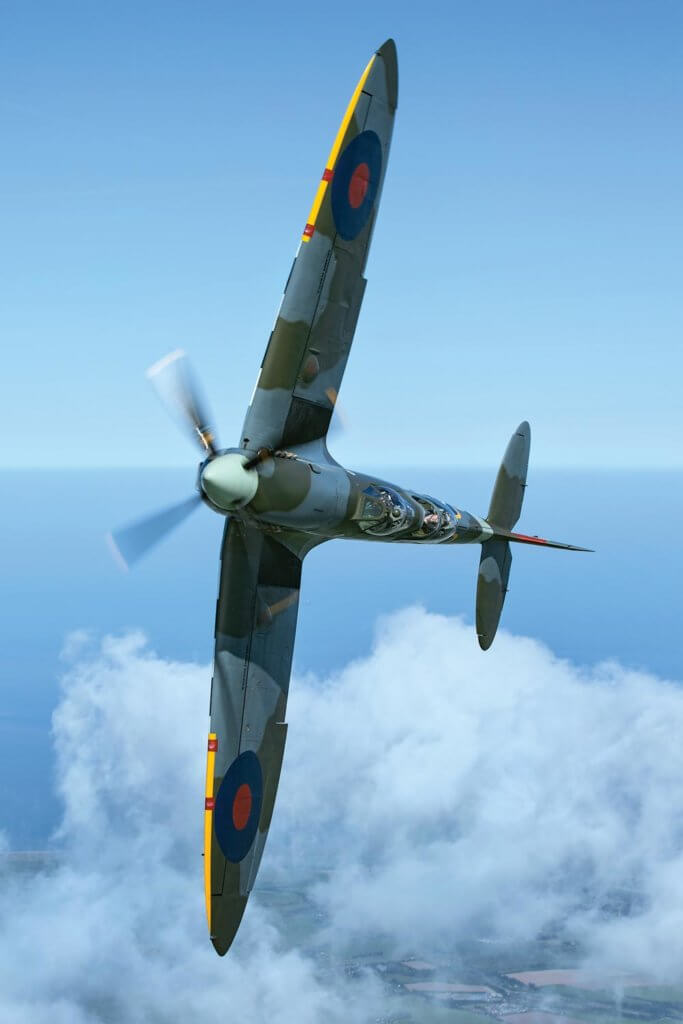
In 1980, ML417 was sold to Stephen Grey and returned to her native England. Restored at Booker by Personal Plane Services as a single-seat Mk IXc, ML417 took to the skies again on Feb. 10, 1984, and was operated by The Fighter Collection from Duxford.
Suffering a landing gear collapse in 1999, ML417 received a major overhaul and flew again on June 18, 2001. Sold to Tom Friedkin in 2001, ML417 now flies in the U.S. and still wears the code 2I-T. As an LFIXc, ML417 has clipped wingtips, which increases the Spitfire’s roll rate.
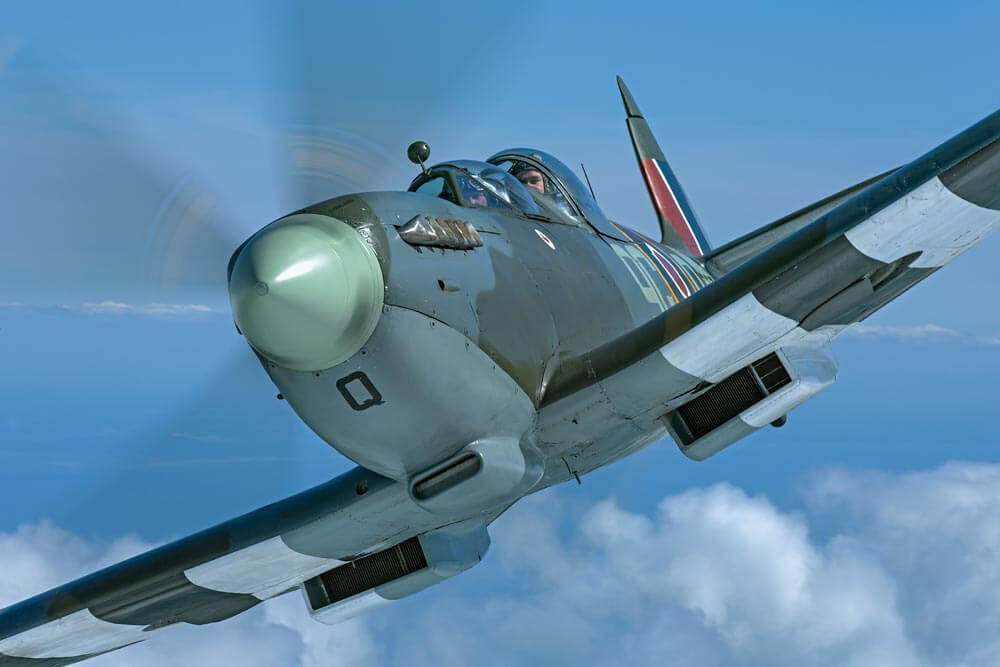

A former 401 Spit V, BL628, is airworthy down under, and the RAF serial number escapes me right now, but there is an, ex-442 Squadron Spit IX in the states being made airworthy but that was some time ago.
Great posting. I’ve been a Spitfire fan for ages. Keep up the great work.
have a question regarding a Spitfire AE-A. my uncle flew that plane in 1942. Douglas Stewart “curly” Hill. Squadron 402 at Kenley. is it possible there are 2 planes marked AE-A ? my uncle’s log book has a spitfire V AE-A in Aug 30,31 1942. and Spitfire IX AE-A November 2,10 1942. any info would be great. i can send a picture of log book. cheers
Spitfire AE-A BS306
Spitfire AE-A EP120